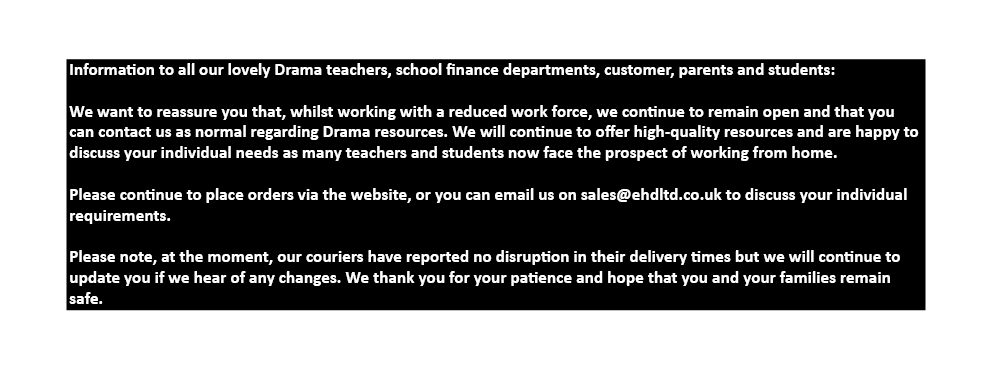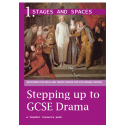Check items to add to the cart or select all
This is the second book in the best-selling Step Up to GCSE range. Created for all GCSE Drama specifications, this booklet is a must for any student who has to study a dramatic work whether it be a set play for an exam, or a drama that students have watched as a live theatre production. It focuses upon what makes a play a play and how a director, designer or actor can approach these dramatic devices, or know what to look out for. It follows the same format as Book One, with teaching ideas and photocopiable student handouts, but this booklet focuses upon how you can teach your students the theory needed when studying any dramatic work. It will cover:
•how to categorise a play in terms of genre and typical generic conventions of popular genres such as tragedies and comedies, melodrama, historical plays etc.
•the history of genres looking back to Aristotle’s Poetics and how this seminal work still influences our understanding of plays and their genres today,
•the different variations and conventions within one genre such as differences between Shakespearean tragedies in comparison to conventions seen in modern day tragedies,
•structure and structural conventions of plays, how this is affected by genre and how to spot structural devices in a set text or production,
• dramatic devices such as dramatic irony and how they can be used in a set text or live theatre production,
•how to approach or analyse characters in a performance looking at direct and indirect characterisation,
•how to approach different characters such as dynamic or static characters, protagonists, antagonists etc.
•how to approach or evaluate a character in terms of their motives or subtext,
•how to approach or analyse a script in terms of pace and rhythm,
•understanding the linguistic conventions in a play or performance and how these can be used to convey character.
•how to analyse a live theatre production or analyse a set text in terms of mood and atmosphere.
It is a versatile book that you could dip in and out, or follow sequentially. It would be a valuable resource to use alongside the teaching of any play. Or, it would be perfect when setting work for any students who may have to work from home or in the event of lockdowns-the sheets and tasks are designed so students can be work independently through them. There are opportunities to revise and consolidate students' understanding of the theory and examples of student evaluations of live theatre so that students can see the theory and terminology being used within written work when analysing how a dramatic work is interpreted for the stage.
An A4, full colour, spiral bound, fully photocopiable resource pack.
•how to categorise a play in terms of genre and typical generic conventions of popular genres such as tragedies and comedies, melodrama, historical plays etc.
•the history of genres looking back to Aristotle’s Poetics and how this seminal work still influences our understanding of plays and their genres today,
•the different variations and conventions within one genre such as differences between Shakespearean tragedies in comparison to conventions seen in modern day tragedies,
•structure and structural conventions of plays, how this is affected by genre and how to spot structural devices in a set text or production,
• dramatic devices such as dramatic irony and how they can be used in a set text or live theatre production,
•how to approach or analyse characters in a performance looking at direct and indirect characterisation,
•how to approach different characters such as dynamic or static characters, protagonists, antagonists etc.
•how to approach or evaluate a character in terms of their motives or subtext,
•how to approach or analyse a script in terms of pace and rhythm,
•understanding the linguistic conventions in a play or performance and how these can be used to convey character.
•how to analyse a live theatre production or analyse a set text in terms of mood and atmosphere.
It is a versatile book that you could dip in and out, or follow sequentially. It would be a valuable resource to use alongside the teaching of any play. Or, it would be perfect when setting work for any students who may have to work from home or in the event of lockdowns-the sheets and tasks are designed so students can be work independently through them. There are opportunities to revise and consolidate students' understanding of the theory and examples of student evaluations of live theatre so that students can see the theory and terminology being used within written work when analysing how a dramatic work is interpreted for the stage.
An A4, full colour, spiral bound, fully photocopiable resource pack.








